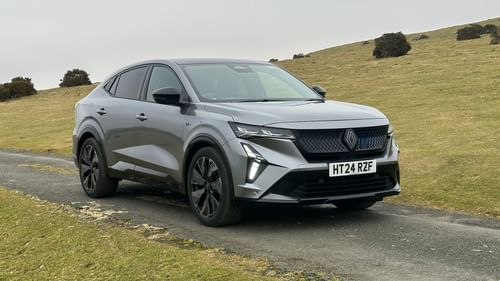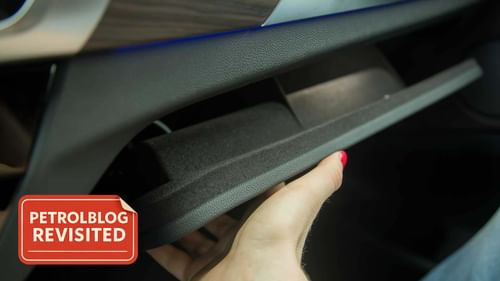Full stop: the Fiat Punto is dead

Much to the delight of many casual observers, Fiat has killed the Punto. “Long overdue,” they say, with little thought for the bigger picture. That’s as maybe, but PETROLBLOG couldn’t let it die without a fond farewell.
Thirteen years is a decent innings for any vehicle, and although it is well past its sell-by date – the zero-star Euro NCAP rating wasn’t its finest hour – it deserves more than to be thrust into the market square, thrown in the stocks and subjected to death by brickbats and snide remarks.
If nothing else, with a couple of exceptions, there has rarely been a bad looking Punto. From the near one-box styling of Giugiaro’s original to the Maserati-esque look of the third-gen supermini – again, penned by the Italian maestro – the Punto has always been the pretty face of the segment.
It faced the unenviable task of succeeding the Uno, which itself had enjoyed a decade in the limelight, amassing 8.8 million sales in the process.
You want pressure? The Punto was faced with the prospect of accounting for around one-third of the world production of all Fiat Group marques. With this in mind, you’d have expected Fiat to be well-prepared for the Punto’s launch in 1993.
Not so. As late as 1989, Fiat was struggling to agree on a new model to replace the Uno, with Italdesign approached to rustle something up at the beginning of the year. By July 1990, Giugiaro’s design was selected ahead of rival bids, with the production version unveiled in Turin three years later.
https://twitter.com/lovecarindustry/status/1025750690570928128
Giugiaro described the Punto as “a two-box, verging on one-box, car with all the advantages that this type of build offers in terms of habitability and visibility within a predetermined length.
“The line of the bonnet is almost continuous with that of the windscreen, a feature to which we have become accustomed today but which, at the time, was extremely innovative. It was also the topic of a great deal of discussion.”
As with many of Giugiaro’s creations, the Punto’s beauty lies in its simplicity. The raised rear lights are Focus-esque – a full five years before the Escort replacement hit the streets – giving both the three- and five-door versions the look of a car without a C-pillar.
Compare and contrast the original Fiat Punto with the contemporary rivals from Ford, Peugeot, Renault and Vauxhall. It might look ordinary today, but back in the early 90s, it was little short of extraordinary.
 Other versions followed, most notably the criminally underrated and Bertone-built cabriolet, along with a three-door panel van, a Sporting and a GT. Powered by a 1.4-litre 8-valve engine, the Punto GT was one of the fastest junior hot hatches of the era, able to hit 60mph in 8.2 seconds, while its rivals would need double figures to achieve the same feat.
Other versions followed, most notably the criminally underrated and Bertone-built cabriolet, along with a three-door panel van, a Sporting and a GT. Powered by a 1.4-litre 8-valve engine, the Punto GT was one of the fastest junior hot hatches of the era, able to hit 60mph in 8.2 seconds, while its rivals would need double figures to achieve the same feat.
Sadly, what it offered in terms of price, pace and panache, it lagged behind its rivals in terms of ride, handling and sharpness. Meanwhile, the interior – an in-house job courtesy of Centro Stile – lacked the flair we’ve come to expect from the Italians.
The Mk2 Punto arrived in 1999, displaying a more straight-edged evolution of Giugiaro’s original. It also wore the classic Fiat badge, in a nod to the company’s centenary year. Pick of the crop would have to be the 1.8-litre HGT, which was good enough for a top speed approaching 130mph.
In 2003, Fiat celebrated the five-millionth Punto with a badly-executed facelift. You could argue that Turin lost its mojo around this time, because a year later Fiat ‘treated’ the bold and quirky Multipla to a faceless restyling job. Not good.
Two years later, Giugiaro was on hand to give the Punto a much-needed image overhaul with the launch of the third-generation model. Built on the same platform as the MiTo and the Corsa (the latter still surprises people), the Punto was graced with a Maserati-like face and typically clean styling.
It also featured one of the best badges ever to grace the rump of a car. The little driver for a ‘P’ complete with a full stop for a head is the work of genius. Indeed, the rear end still looks good today, 13 years on from its launch.
 Yes, the Fiat Punto is as old as the mountains to the north of Turin, but the fact that it will die without a replacement sees the end of a bloodline stretching back through the Uno, 127 and 850.
Yes, the Fiat Punto is as old as the mountains to the north of Turin, but the fact that it will die without a replacement sees the end of a bloodline stretching back through the Uno, 127 and 850.
Even worse is the fact that the production facility will be used to build yet another SUV, this time with a Maserati badge. Fiat should have put the Punto out of its misery years ago, but instead, it has left it to endure a slow and painful death. It has also failed to invest in the excellent but ageing Panda, which soldiers on, seven years after its debut at the Frankfurt Motor Show.
Instead of celebrating 25 years of production, sales of more than nine million, a European Car of the Year award in 1995 and, in 1997, the unlikely title of Europe's best-selling car, the Punto has become an object of ridicule. Had Fiat done the honourable thing and called time on the Punto four years ago, it wouldn't have been subjected to that catastrophic crash test. Shame on you, Fiat.
Goodbye, little Punto – the supermini segment will seem a lot less stylish in your absence.
Full stop. Period. Punto.
[gallery columns="4" size="large" link="file" ids="eyJ1cmwiOiJodHRwczpcL1wvcGV0cm9sYmxvZy5jb21cL3dwLWNvbnRlbnRcL3VwbG9hZHNcLzIwMThcLzA4XC9GaWF0LVB1bnRvLVNwb3J0aW5nLWJlYWNoLmpwZyIsInRpdGxlIjoiRmlhdCBQdW50byBTcG9ydGluZyBiZWFjaCIsImNhcHRpb24iOiIiLCJhbHQiOiJGaWF0IFB1bnRvIFNwb3J0aW5nIGJlYWNoIiwiZGVzY3JpcHRpb24iOiIifQ==,eyJ1cmwiOiJodHRwczpcL1wvcGV0cm9sYmxvZy5jb21cL3dwLWNvbnRlbnRcL3VwbG9hZHNcLzIwMThcLzA4XC9GaWF0LVB1bnRvLWludGVyaW9yLmpwZyIsInRpdGxlIjoiRmlhdCBQdW50byBpbnRlcmlvciIsImNhcHRpb24iOiIiLCJhbHQiOiJGaWF0IFB1bnRvIGludGVyaW9yIiwiZGVzY3JpcHRpb24iOiIifQ==,eyJ1cmwiOiJodHRwczpcL1wvcGV0cm9sYmxvZy5jb21cL3dwLWNvbnRlbnRcL3VwbG9hZHNcLzIwMThcLzA4XC9GaWF0LVB1bnRvLVNwZWVkZ2Vhci5qcGciLCJ0aXRsZSI6IkZpYXQgUHVudG8gU3BlZWRnZWFyIiwiY2FwdGlvbiI6IiIsImFsdCI6IkZpYXQgUHVudG8gU3BlZWRnZWFyIiwiZGVzY3JpcHRpb24iOiIifQ==,eyJ1cmwiOiJodHRwczpcL1wvcGV0cm9sYmxvZy5jb21cL3dwLWNvbnRlbnRcL3VwbG9hZHNcLzIwMThcLzA4XC9GaWF0LVB1bnRvLVNwb3J0aW5nLmpwZyIsInRpdGxlIjoiRmlhdCBQdW50byBTcG9ydGluZyIsImNhcHRpb24iOiIiLCJhbHQiOiJGaWF0IFB1bnRvIFNwb3J0aW5nIiwiZGVzY3JpcHRpb24iOiIifQ==,eyJ1cmwiOiJodHRwczpcL1wvcGV0cm9sYmxvZy5jb21cL3dwLWNvbnRlbnRcL3VwbG9hZHNcLzIwMThcLzA4XC9QdW50by1IR1QtQWJhcnRoLmpwZyIsInRpdGxlIjoiUHVudG8gSEdUIEFiYXJ0aCIsImNhcHRpb24iOiIiLCJhbHQiOiJQdW50byBIR1QgQWJhcnRoIiwiZGVzY3JpcHRpb24iOiIifQ==,eyJ1cmwiOiJodHRwczpcL1wvcGV0cm9sYmxvZy5jb21cL3dwLWNvbnRlbnRcL3VwbG9hZHNcLzIwMThcLzA4XC9GaWF0LVB1bnRvLWZhY2VsaWZ0LmpwZyIsInRpdGxlIjoiRmlhdCBQdW50byBmYWNlbGlmdCIsImNhcHRpb24iOiIiLCJhbHQiOiJGaWF0IFB1bnRvIGZhY2VsaWZ0IiwiZGVzY3JpcHRpb24iOiIifQ==,eyJ1cmwiOiJodHRwczpcL1wvcGV0cm9sYmxvZy5jb21cL3dwLWNvbnRlbnRcL3VwbG9hZHNcLzIwMThcLzA4XC9GaWF0LVB1bnRvLTIwMTIuanBnIiwidGl0bGUiOiJGaWF0IFB1bnRvIDIwMTIiLCJjYXB0aW9uIjoiIiwiYWx0IjoiRmlhdCBQdW50byAyMDEyIiwiZGVzY3JpcHRpb24iOiIifQ==,eyJ1cmwiOiJodHRwczpcL1wvcGV0cm9sYmxvZy5jb21cL3dwLWNvbnRlbnRcL3VwbG9hZHNcLzIwMThcLzA4XC9HcmVlbi1QdW50by5qcGciLCJ0aXRsZSI6IkdyZWVuIFB1bnRvIiwiY2FwdGlvbiI6IiIsImFsdCI6IkdyZWVuIFB1bnRvIiwiZGVzY3JpcHRpb24iOiIifQ=="]
Giugiaro quote courtesy of Italdesign: Thirty Years on the Road, by Luca Ciferri.





